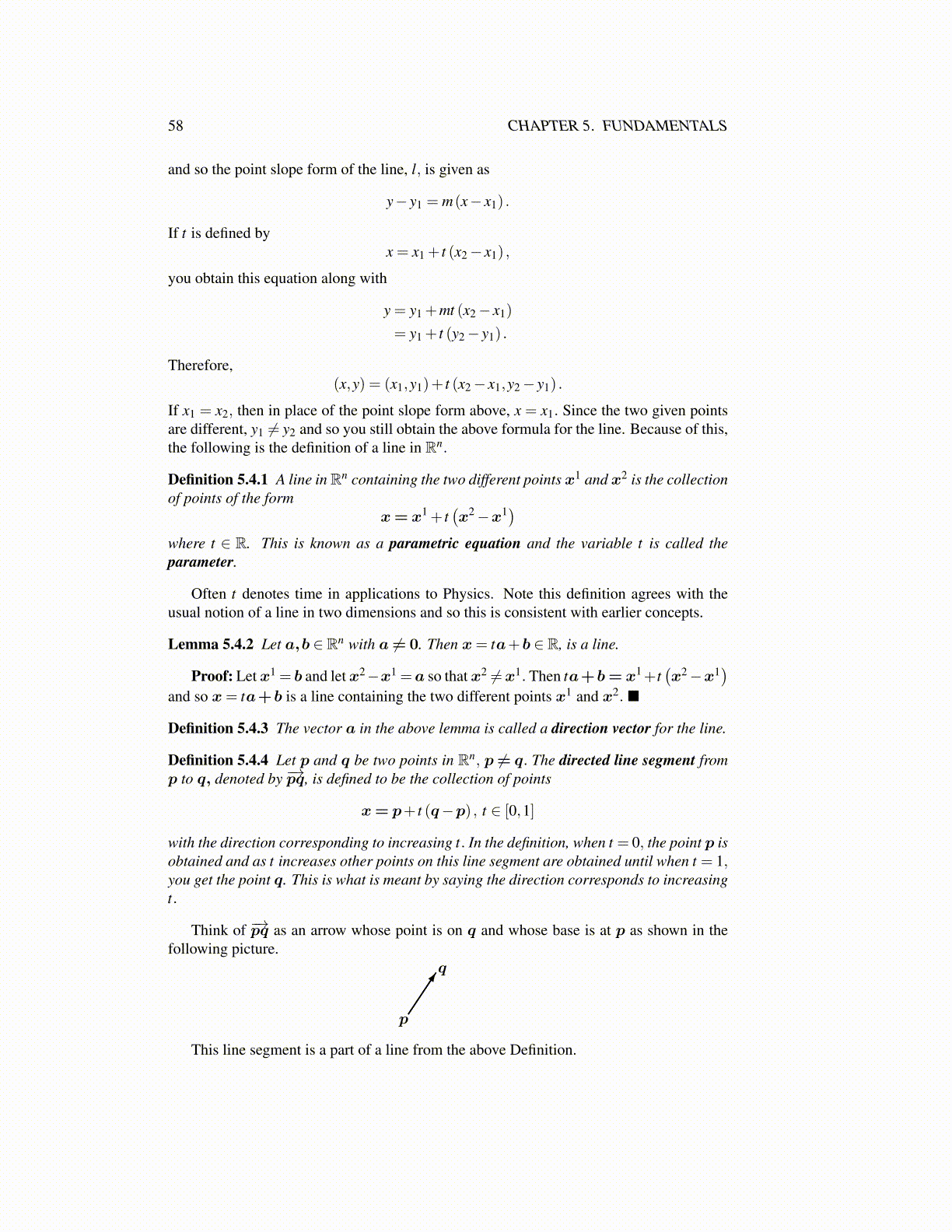
58 CHAPTER 5. FUNDAMENTALS
and so the point slope form of the line, l, is given as
y− y1 = m(x− x1) .
If t is defined byx = x1 + t (x2− x1) ,
you obtain this equation along with
y = y1 +mt (x2− x1)
= y1 + t (y2− y1) .
Therefore,(x,y) = (x1,y1)+ t (x2− x1,y2− y1) .
If x1 = x2, then in place of the point slope form above, x = x1. Since the two given pointsare different, y1 ̸= y2 and so you still obtain the above formula for the line. Because of this,the following is the definition of a line in Rn.
Definition 5.4.1 A line in Rn containing the two different points x1 and x2 is the collectionof points of the form
x= x1 + t(x2−x1)
where t ∈ R. This is known as a parametric equation and the variable t is called theparameter.
Often t denotes time in applications to Physics. Note this definition agrees with theusual notion of a line in two dimensions and so this is consistent with earlier concepts.
Lemma 5.4.2 Let a,b ∈ Rn with a ̸= 0. Then x= ta+b ∈ R, is a line.
Proof: Let x1 = b and let x2−x1 =a so that x2 ̸=x1. Then ta+b= x1+t(x2−x1
)and so x= ta+b is a line containing the two different points x1 and x2. ■
Definition 5.4.3 The vector a in the above lemma is called a direction vector for the line.
Definition 5.4.4 Let p and q be two points in Rn, p ̸= q. The directed line segment fromp to q, denoted by −→pq, is defined to be the collection of points
x= p+ t (q−p) , t ∈ [0,1]
with the direction corresponding to increasing t. In the definition, when t = 0, the point p isobtained and as t increases other points on this line segment are obtained until when t = 1,you get the point q. This is what is meant by saying the direction corresponds to increasingt.
Think of −→pq as an arrow whose point is on q and whose base is at p as shown in thefollowing picture.
q
p
This line segment is a part of a line from the above Definition.